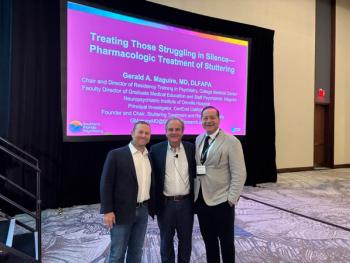
Contribution of Genetics, Environment, and Inflammation to Development of Severe Mental Illness
Key Takeaways
- SPMI arises from genetic vulnerabilities interacting with environmental factors like postinfectious inflammation, substance use, and family communication patterns.
- Genetic predispositions in disorders like schizophrenia and autism spectrum disorder are compounded by environmental risks such as lead exposure and traumatic brain injury.
Explore the complex interplay of genetics, environment, concussion, substance abuse, and inflammation in severe mental illnesses, revealing critical insights for prevention and treatment.
Introduction
Severe and persistent mental illnesses (SPMI) encompass psychiatric conditions including psychotic disorders (eg, schizophrenia), affective and mood disorders (eg, bipolar disorder, major depression), anxiety disorders including posttraumatic stress disorder (PTSD) and trauma-related conditions, and developmental disorders such as autism spectrum disorder (ASD).
Emerging research supports a multifactorial causation model in which polygenic genetic vulnerability interacts dynamically with diverse modifiable environmental factors, notably including postinfectious inflammation and substance use (petty drug abuse), as key pathways affecting illness onset and persistence1,2,3
Genetic Vulnerability Across Disorders
- Psychotic disorders such as schizophrenia demonstrate heritability estimates up to 80%, mediated by genetic variants affecting neural networks and cognitive endophenotypes.4
- Mood and affective disorders show high polygenic risk (40% to 70%) overlapping with psychosis and anxiety disorders.5
- Anxiety, obsessive compulsive disorder (OCD), PTSD, and trauma-related disorders share moderate to high heritability (40% to 65%) along with genetic overlap with mood disorders.6,7
- Autism spectrum disorder is highly heritable (70% to 90%) with broad genetic heterogeneity impacting related developmental and psychiatric vulnerabilities.8 The majority of spectrum-disorder patients suffer with neuropsychiatric comorbidities such as depression, epilepsy, anxiety, and psychosis such as schizophrenia.9,10
Environmental Risk Factors
Key environmental contributors to SPMI include:
- Parental Communication Deviance: Fragmented, ambiguous family communication patterns elevate risk for schizophrenia spectrum and impact social and emotional development relevant to mood, anxiety, and autistic spectrum conditions.3,11,12
- Inadequacy or Deprivation, Maltreatment: Whether intentional or not, caretakers can directly affect physical and psychiatric well-being.13-17
- Childhood Lead Exposure: Lead neurotoxicity disrupts brain development and neurotransmission, increasing multifactorial risk for psychiatric and neurodevelopmental disorders.2,18
- Head Injury/Traumatic Brain Injury (TBI): Neural damage and neuroinflammation after traumatic injury amplify genetic vulnerability to psychosis, mood, anxiety, and developmental impairments.5,19
- Postinfectious Inflammation: Systemic infections trigger cytokine storms and brain neuroinflammation disrupting neurotransmitter systems, neuroendocrine regulation, and sometimes induc autoimmune injury, contributing to diverse psychiatric syndromes.1,20
- Petty Drug Abuse: Use of caffeine, tobacco or nicotine, cannabis, alcohol, and energy drinks constitutes a modifiable environmental risk factor interacting with genetic vulnerability, elevating risk and persistence of psychiatric disorders.5
Post-Infectious Inflammation as a Distinct Environmental Factor
Infections provoke systemic immune activation with elevated cytokines (IL-6, TNF-α, IL-1β) that signal across the blood-brain barrier activating microglia, causing neuroinflammation, impaired synaptic plasticity, neurotransmitter balance disruption, and sometimes autoimmune neuronal injury.1,20 These contribute to onset or worsening of depression, psychosis, PTSD, OCD, and neurodevelopmental disorders.
Concluding Thoughts
Severe and persistent mental illnesses arise from the intersection of inherited genetic liability, aberrant communication in the family, and multiple environmental risks including concussion/TBI, environmental toxin exposure, postinfectious inflammation, and petty drug abuse.17
Together, neuroinflammation, exposures to environmental toxins, brain trauma, family environment, and substance use or abuse synergistically disrupt brain function governing cognition, mood, and behavior. Prevention and treatment must integrate approaches addressing infectious, toxic, psychosocial, and substance-related risks to reduce illness burden and improve outcomes.
Dr Best is the director of The Neuroscience Center in Deerfield, Illinois.
References
1. Boldrini M, Canoll PD, Klein RS.
2. McFarland MJ, Reuben A, Hauer M.
3. Roisko R, Wahlberg KE, Hakko H, et al.
4. Sullivan PF, Kendler KS, Neale MC.
5. Robinson N, Bergen SE.
6. Burton CL, Park LS, Corfield EC, et al.
7. Mataix-Cols D, Fernández de la Cruz L, Beucke JC, et al.
8. Sandin S, Lichtenstein P, Kuja-Halkola R, et al.
9. Hughes JR, Melyn M.
10. Underwood JFG, DelPozo-Banos M.
11. Levy DL, Coleman MJ, Sung H, et al. (2010).
12. de Sousa P, Varese F, Sellwood W, et al.
13. Binder EB, Bradley RG, Liu W, et al.
14. McGrath JJ, Eyles DW, Pedersen CB, et al.
15. Schulz-Heik RJ, Rhee SH, Silvern LE.
16. South SC, Schafer MH, Ferraro KF.
17. Uher R.
18. Sullivan PF, Kendler KS, Neale MC.
19. Orlovska S, Pedersen MS, Benros ME, et al.
20. Okobi OE, Ayo-Farai O, Tran M, et al.
Newsletter
Receive trusted psychiatric news, expert analysis, and clinical insights — subscribe today to support your practice and your patients.














